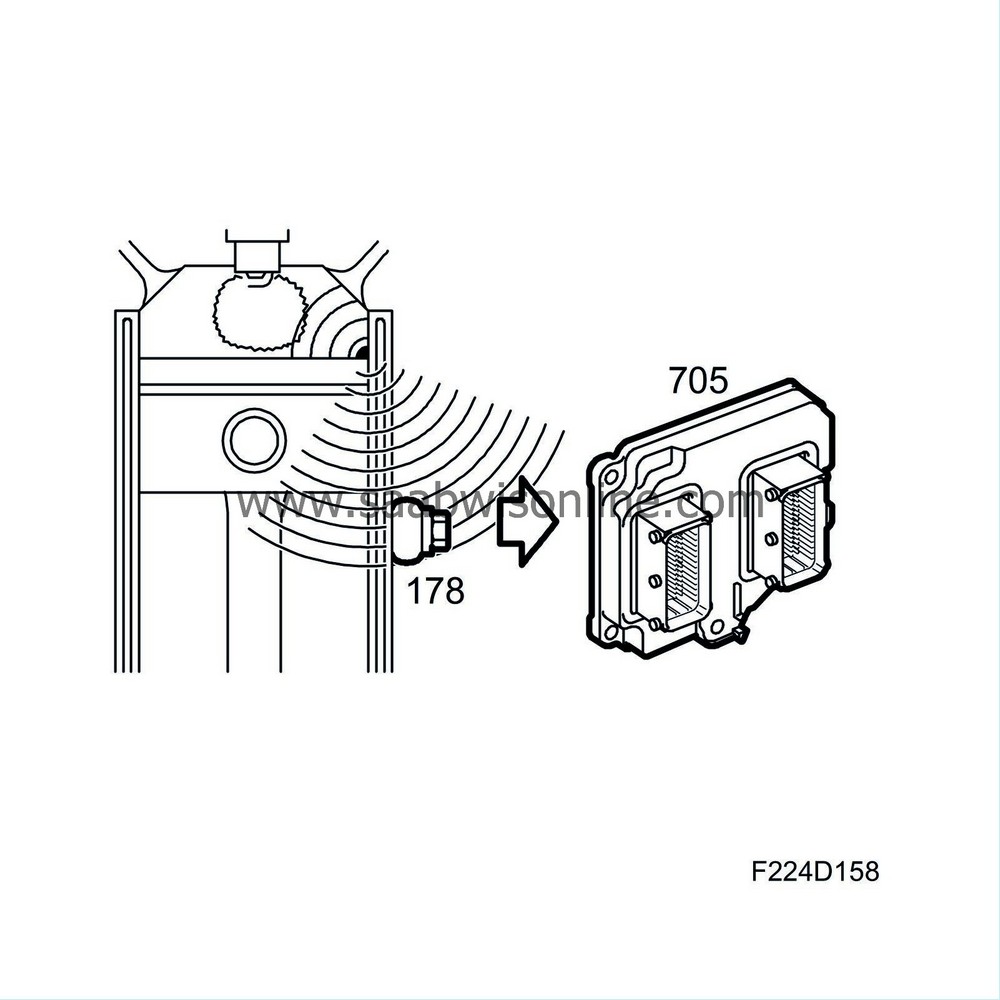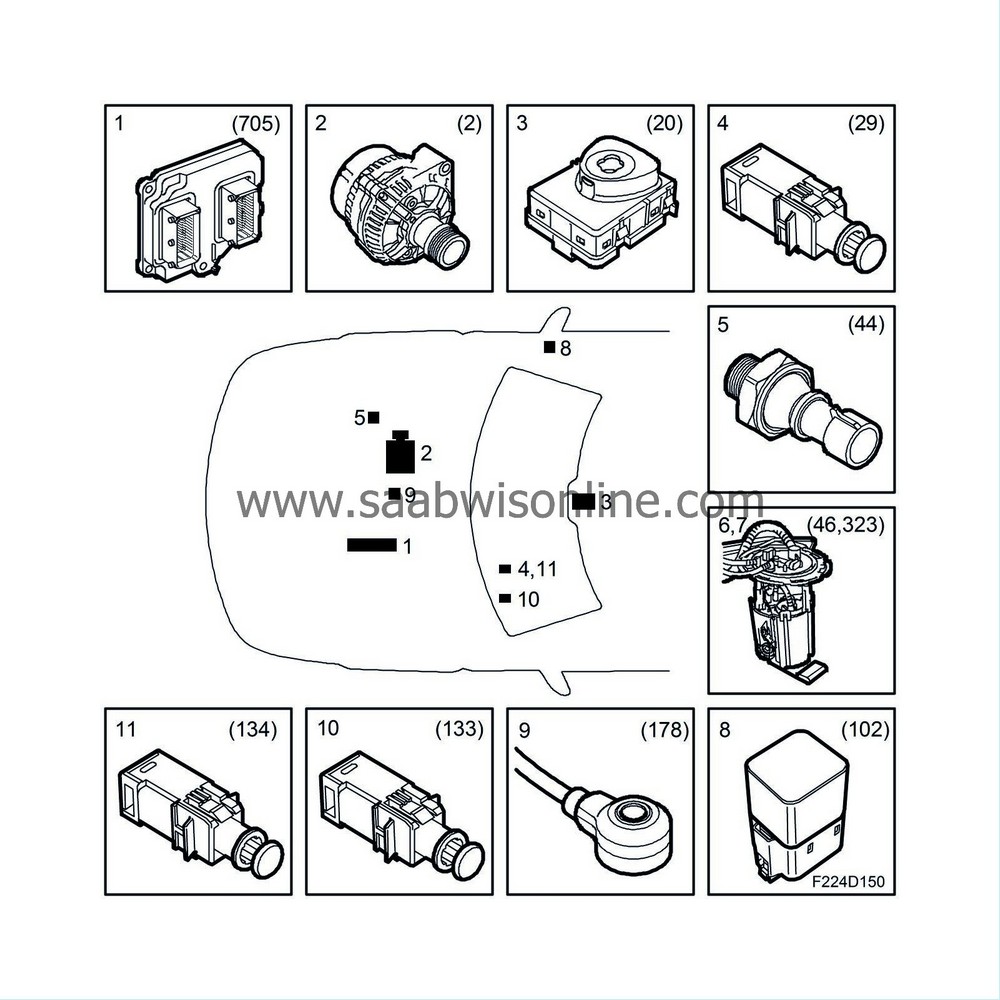PRE-RELEASE
Brief description
| Brief description |
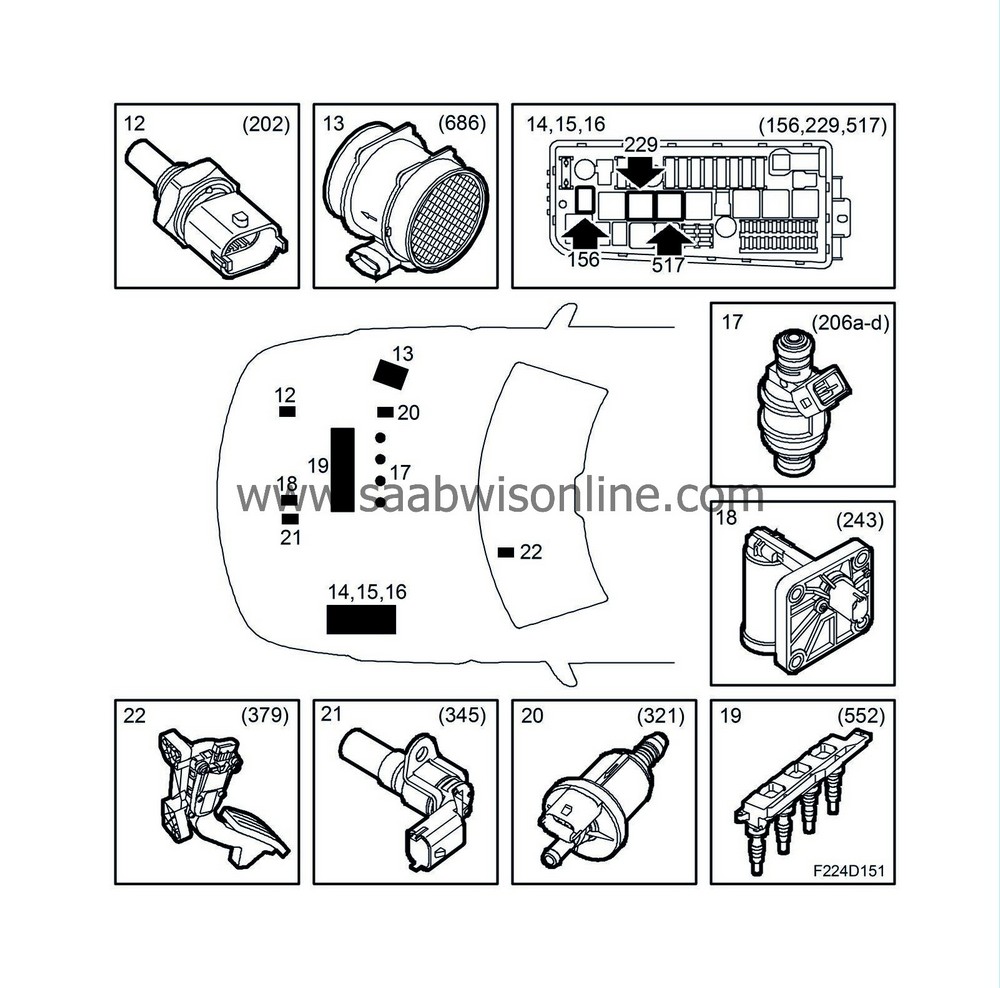
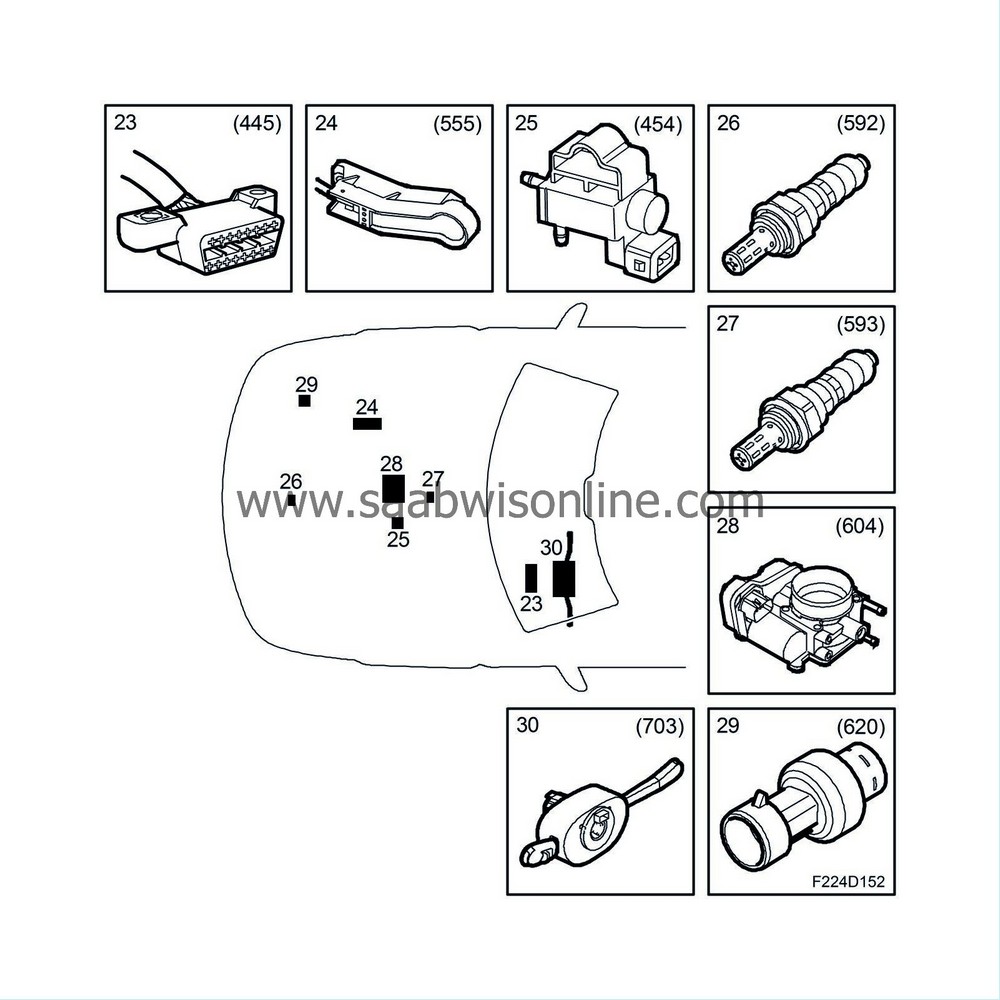
| Overview |
| 1. |
Control module, Simtec 71.6 (705)
|
|
| 2. |
Generator (2)
|
|
| 3. |
Ignition lock (20)
|
|
| 4. |
Contact, brake light (29)
|
|
| 5. |
Engine oil pressure sensor (44)
|
|
| 6. |
Fuel level sensor (46)
|
|
| 7. |
Engine, fuel pump (323)
|
|
| 8. |
Relay, fuel pump (102)
|
|
| 9. |
Knock sensor (178)
|
|
| 10. |
Contact, clutch, cruise control (133)
|
|
| 11. |
Contact, brake, cruise control (134)
|
|
| 12. |
Coolant temperature sensor (202)
|
|
| 13. |
Mass air flow sensor (686)
|
|
| 14. |
Main relay, engine control system (229)
|
|
| 15. |
Relay, starting relay (517)
|
|
| 16. |
Relay, A/C compressor (156)
|
|
| 17. |
Injector cyl. 1-4 (206a-c)
|
|
| 18. |
Engine oil level sensor (243)
|
|
| 19. |
Ignition coil unit (552)
|
|
| 20. |
EVAP canister purge valve (321)
|
|
| 21. |
Crankshaft position sensor (345)
|
|
| 22. |
Throttle position sensor (379)
|
|
| 23. |
Diagnostic socket, 16-pin, CARB (445)
|
|
| 24. |
Camshaft position sensor (555)
|
|
| 25. |
Solenoid valve, VIM (454)
|
|
| 26. |
Preheated oxygen sensor, front (592)
|
|
| 27. |
Preheated oxygen sensor, rear (593)
|
|
| 28. |
Throttle body actuator unit (604)
|
|
| 29. |
Pressure sensor, A/C (620)
|
|
| 30. |
Column integration module (703)
|
|
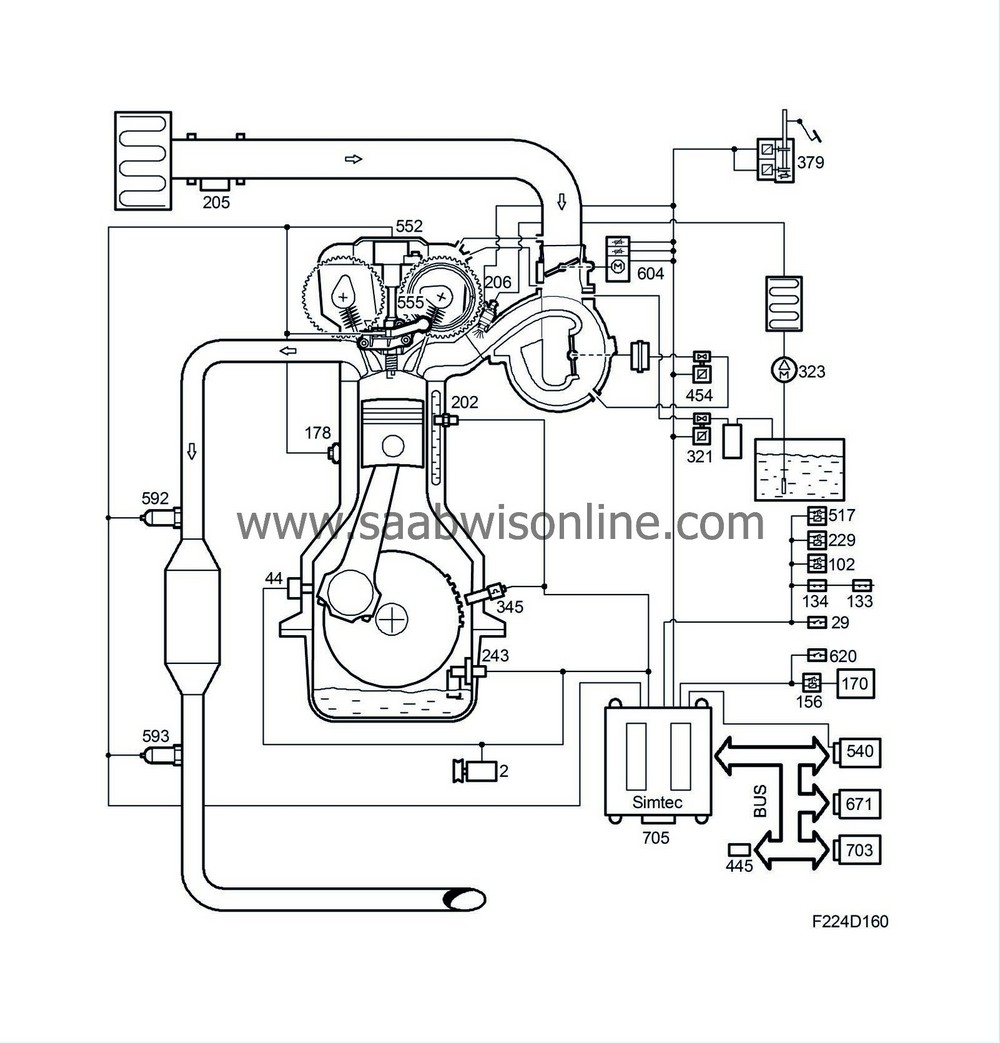
Simtec 71.6 has been developed by Siemens VDO. The main task of the ECM is to regulate the torque (air mass), fuel and ignition.
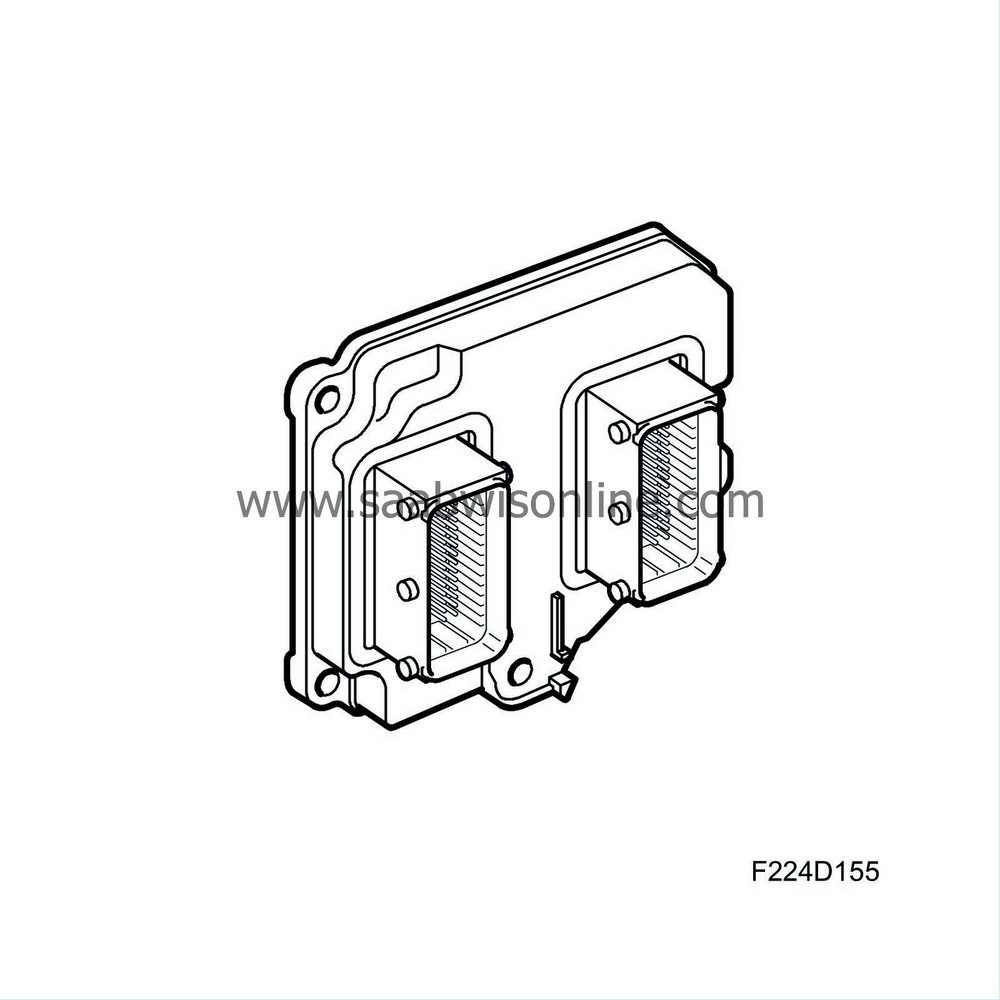
When the driver presses the accelerator pedal in effects and pedal opposition sensor that is integrated in the pedal bracket. The information in the form of a voltage is connected to the ECM, which converts a voltage to a request for torque by the driver. ECM then processes this torque request with regard to the prevailing conditions and limitations. The result is an air mass request to achieve the torque requested by ECM. This is because the maximum torque at the current operating point has already been attained.
ECM regulates the throttle area (opening angle) to attain the correct torque, i.e. air mass per combustion.
The system has the following advantages:
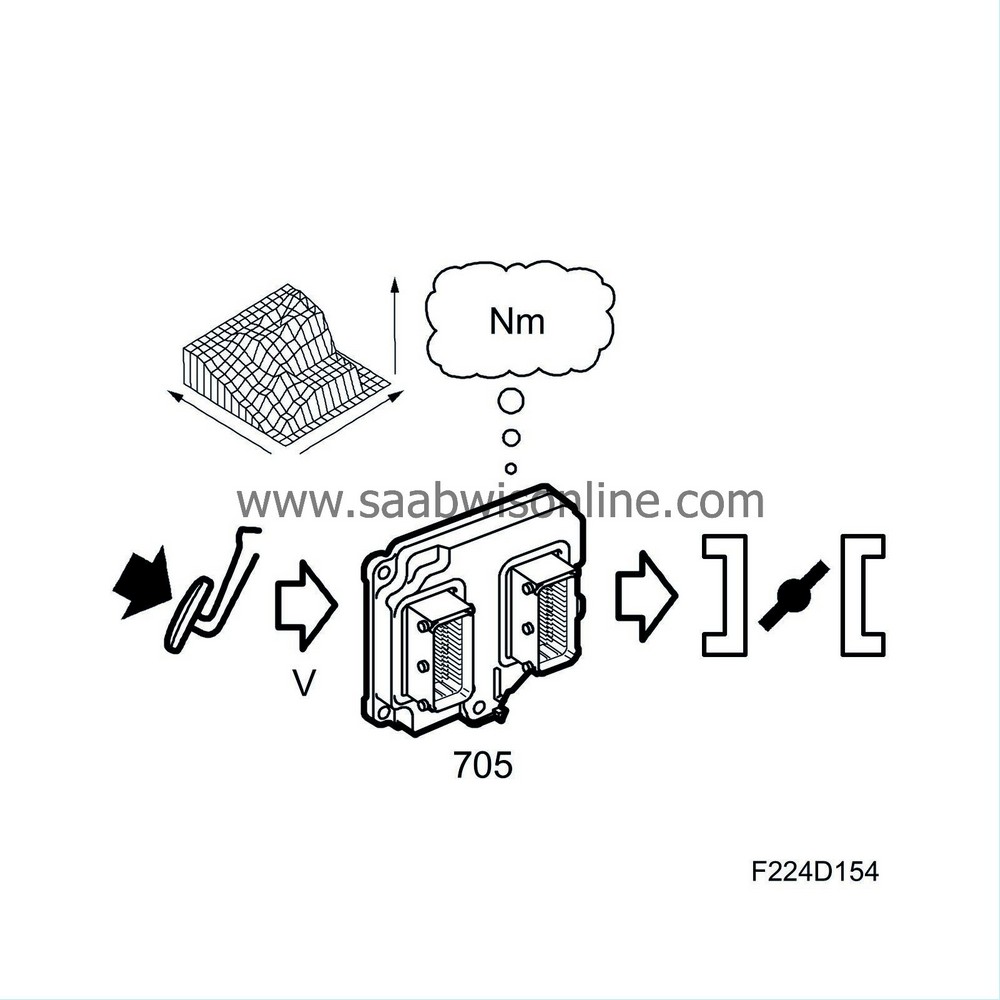
| • |
Exhaust emissions on load changes are reduced
|
|
| • |
Idle control is integrated
|
|
| • |
Load compensation is possible over the entire load and speed range
|
|
| • |
Effective torque limitation is possible over the entire load and speed range
|
|
| • |
Cruise control can easily be integrated into the system
|
|
The fuel injection function is sequential and is regulated with air mass per combustion and engine speed as the main parameters.
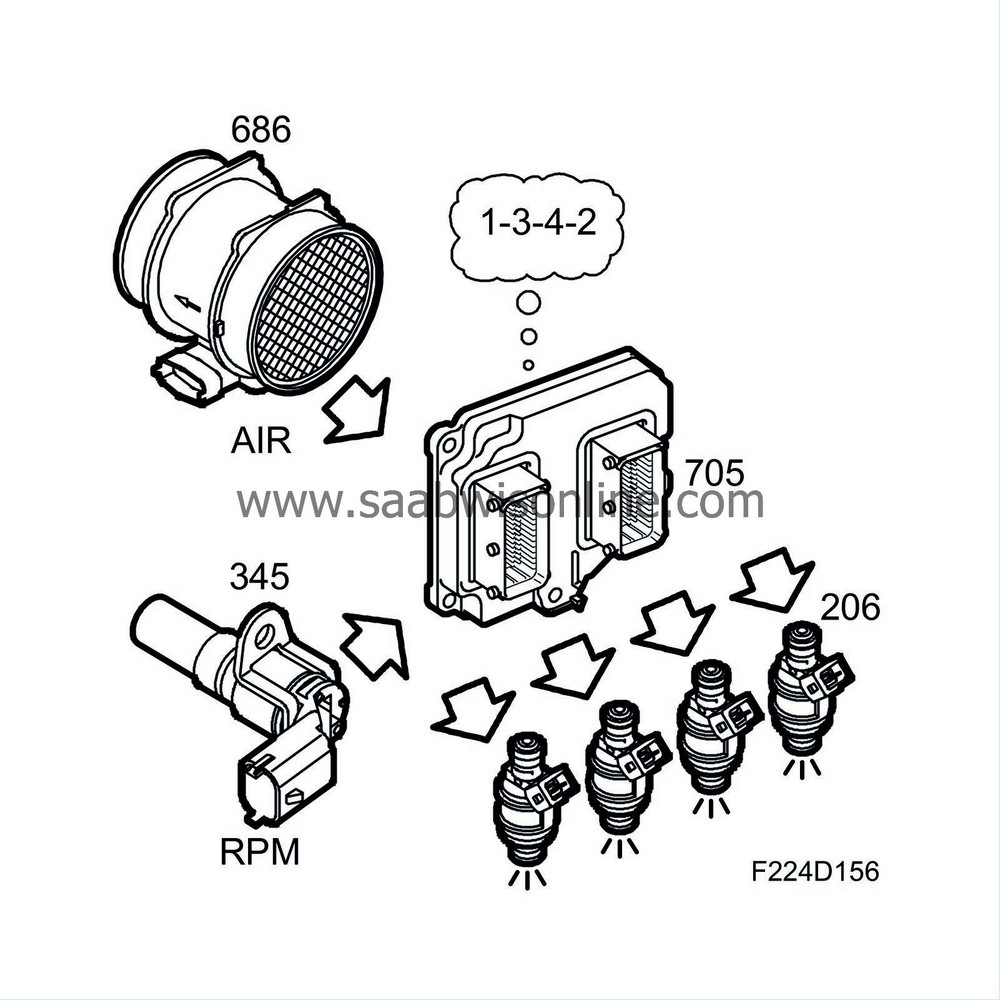
Ignition is by means of individual ignition coils assembled to one unit and located in the centre of the camshaft cover.
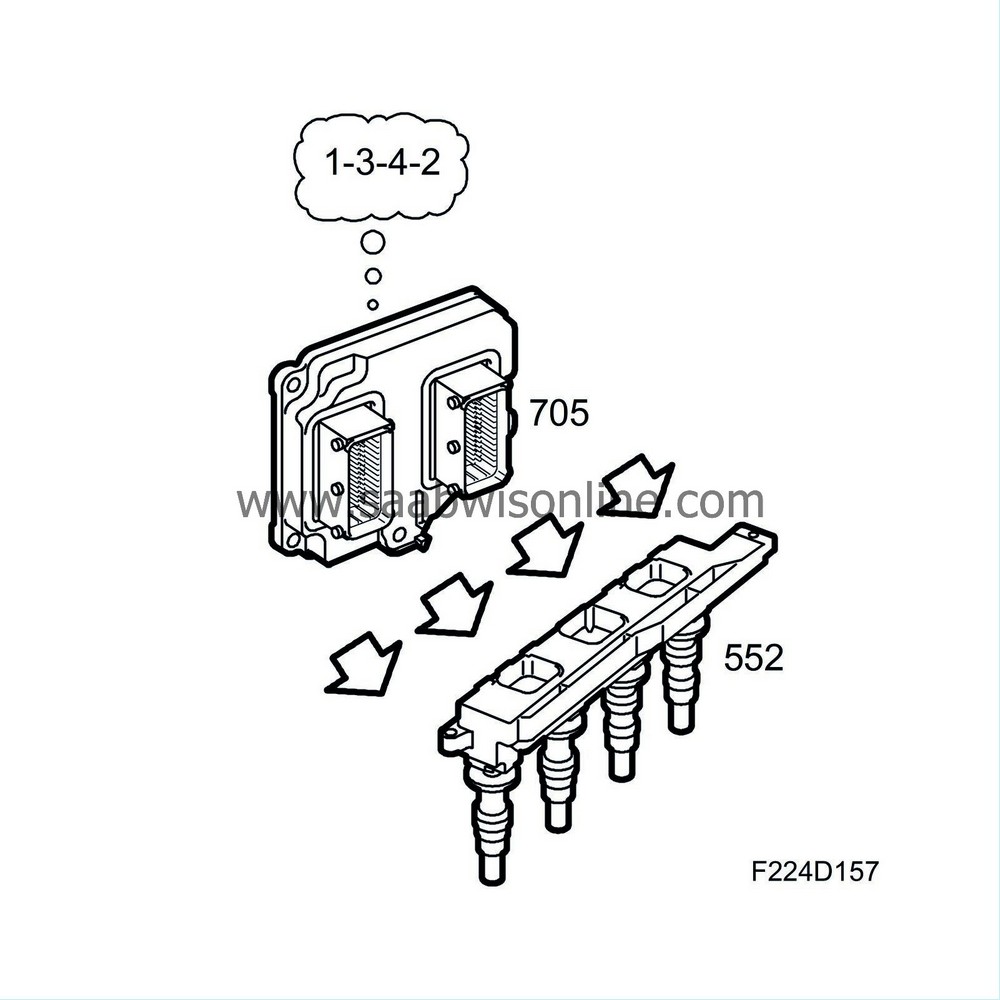
ECM has a camshaft position sensor to synchronise the engine.
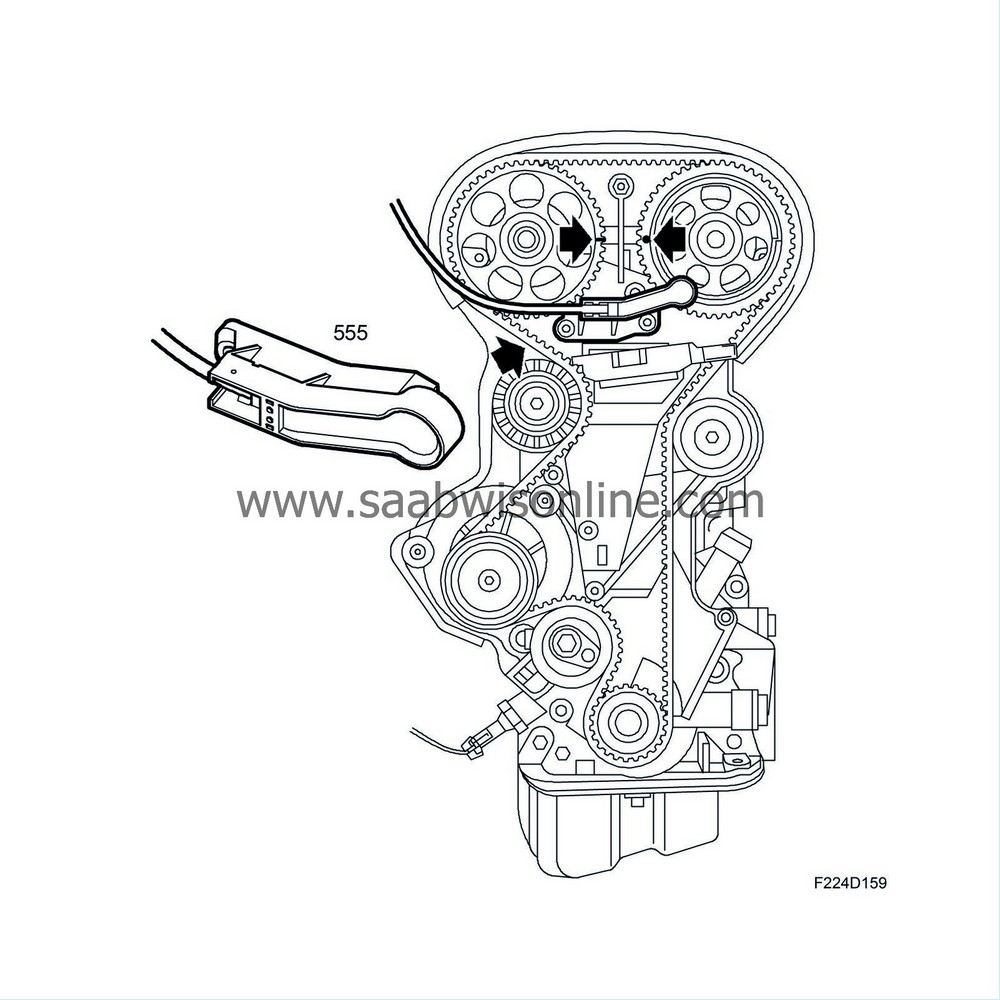
The system has a piezoelectric knock sensor for knock control.
